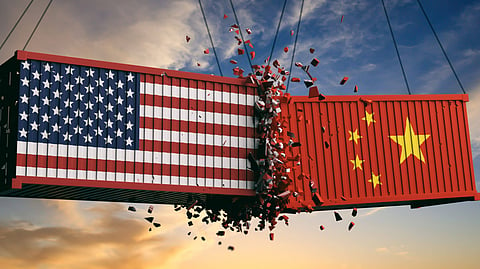33% Supply Chains Have Moved or Plan to Move Out of China: Gartner
A Gartner, Inc. survey of 260 global supply chain leaders in February and March 2020 found that 33% had moved sourcing and manufacturing activities out of China or plan to do so in the next two to three years.
Survey results show that the COVID-19 pandemic is only one of several disruptions that have put global supply chains under pressure.
Kamala Raman, senior director analyst with the Gartner Supply Chain Practice said: “Global supply chains were being disrupted long before COVID-19 emerged. Already in 2018 and 2019, the U.S.-China trade war made supply chain leaders aware of the weaknesses of their globalized supply chains and question the logic of heavily outsourced, concentrated and interdependent networks.
"As a result, a new focus on network resilience and the idea of more regional manufacturing emerged. But this kind of change comes with a price tag.”
For decades, China has been the go-to destination for high-quality, low-cost manufacturing. Gartner research showed that the margin between those companies planning to add jobs in China versus taking them away narrowed sharply in 2019. The primary reason is the increase in tariff costs.
Watch: The Changing Face of Global Supply Chains Post Covid-19
Ms. Raman adds: “We have found that tariffs imposed by the U.S. and Chinese governments during the past years have increased supply chain costs by up to 10% for more than 40% of organizations. For just over one-quarter of respondents, the impact has been even higher.
“Popular alternative locations are Vietnam, India, and Mexico. The second main reason for moving business out of China is that supply chain leaders want to make their networks more resilient.”
Only 21% of survey respondents believe that they have a highly resilient network today. However, 55% expect to have a highly resilient network in the next two to three years – a reaction to disruptions such as Brexit, the trade war and COVID-19.
However, resilience has a price. Fifty-eight percent of respondents agree that more resilience also results in additional structural costs to the network.
“We are at a crossroads in the evaluation of global supply chains,” Ms. Raman added.
One-quarter of survey respondents stated that they have already regionalized or localized manufacturing to be closer to demand despite the cost.
Between February and March 2020, Gartner’s Weathering the Supply Chain Storm Survey gathered data from 260 respondents, responsible for supply chain and related functions across a broad range of industries, including high-tech, industrial and food & beverage. Respondents were located in North & South America and the EMEA and APAC regions.
Read More: Tradeshift Launches New Cloud-Based Supply Chain Payment System


